Members of UCLA Kyodo Taiko and Bonbu Stories entertain the audience with a musical and dance interlude.
(Photos: Don Kunitomi/Charles James)
The 55th Annual Manzanar Pilgrimage welcomes all in fellowship
to remember the lessons of the past and join in unity to combat
present-day issues threatening democracy and justice.
By Charles James, P.C. Contributor
The first Manzanar Pilgrimage was held in December 1969 with a group of about 150 people. At the 55th Annual Manzanar Pilgrimage held on April 25 at the Manzanar National Historic Site, that number would increase tenfold to at least 1,500.
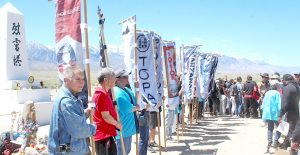
Banners representing each of the 10 WRA concentration camps and the famed 442nd Army battalion
This year’s theme at the pilgrimage was “Peace, Justice and the Defense of Democracy,” a clearly fitting topic given the history that created the Manzanar Concentration Camp during World War II and today’s divisive, polarized social and political environment that finds many Americans still facing threats from ignorance, racism, stigmatism and hysteria largely based on falsehoods, appeals to prejudice and hate.
The Manzanar Committee is determined to stand up to the trends that threaten not only the human and civil rights of all Americans, but also the threats facing many groups around the world from antisemitism, Islamophobia, xenophobia, racism, voter suppression and anti-LGBTQ rights, to mention just a few.
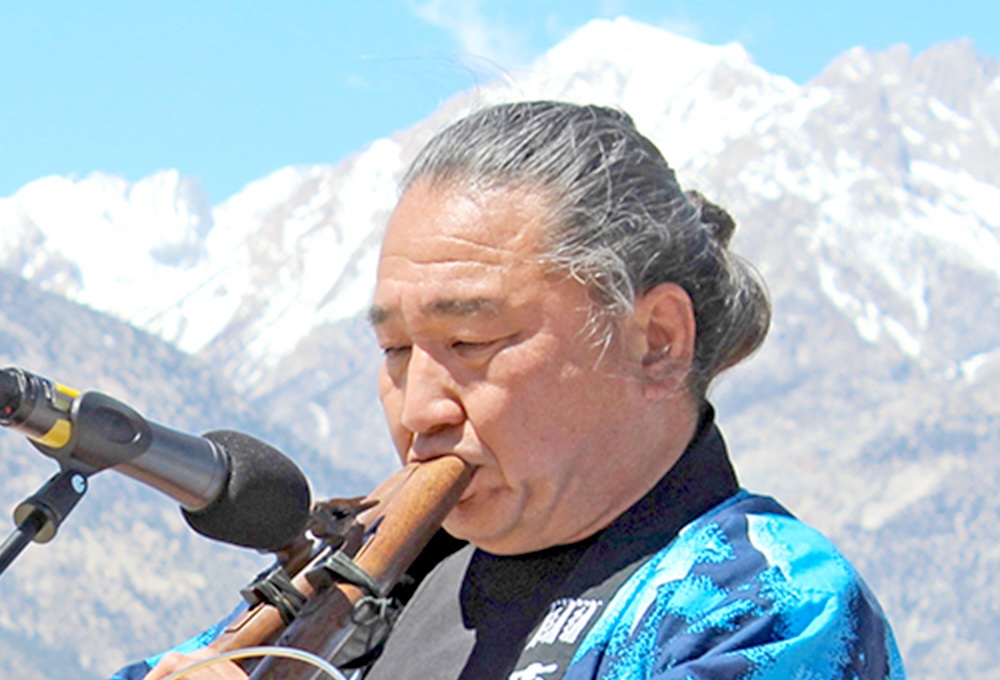
Phoenix-based musician Ken Koshio entertains the audience with a musical interlude.
Manzanar was the first of 10 concentration camps operated by the War Relocation Authority several months after the attack by Japan on Pearl Harbor on Dec. 7, 1941. Nationally, the American government forcibly relocated and incarcerated at least 120,000 people of Japanese ancestry. They lost their homes, belongings, businesses and their jobs. Two-thirds were denied their civil rights guaranteed under the U.S. Constitution as U.S, citizens. It was one of the most egregious examples in American history of a government failing to protect the rights of a group of its citizens.
Two-thirds of the 11,070 Japanese Americans (citizens of the U.S. by birth) were processed through the Manzanar Concentration Camp during WWII. The camp population peaked at 10,046, dwindling to 6,000 by 1944. Some 90 percent of all those sent to Manzanar were from the Los Angeles area. The last few hundred internees left in November 1945, just three months before the end of the war. Many incarcerees spent three and a half years at Manzanar.
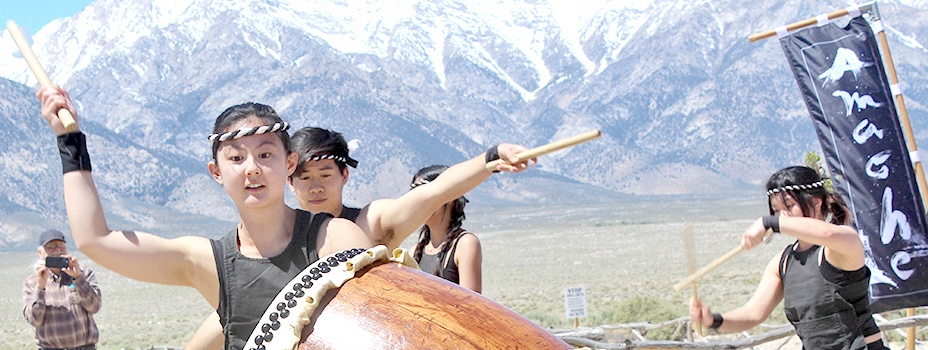
UCLA’s Kyodo Taiko performs during the ceremony.
The Pilgrimage Day program included several speeches, along with cultural and musical performances by UCLA’s Kyodo Taiko, Bonbu Stories and artist-musician Ken Koshio from Phoenix. As always, the interfaith ceremony was held in closing to commemorate those buried at the cemetery.
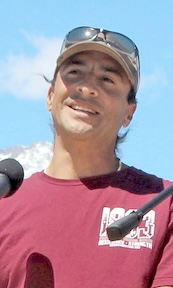
Jerimiah Joseph of the Lone Pine Paiute-Shoshone Tribe welcomes visitors.
Jeremiah Joseph, cultural resource protector and a land restoration specialist of the Lone Pine Paiute-Shoshone Tribe, offered a welcoming speech to the area and praised Tribal Historic Preservation Officer Kathy Bancroft, who in the past welcomed visitors to the pilgrimage on behalf of the native tribe. Joseph’s comments were followed by a few words from the acting-Superintendent of the Manzanar National Historic Site Gavin Gardner.
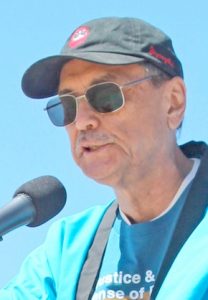
Manzanar Committee Co-Chair Bruce Embrey delivers opening comments at the 55th Annual Manzanar Pilgrimage.
Bruce Embrey then offered opening remarks on behalf of the Manzanar Committee. “We return to Manzanar because we believe it is our duty to honor our families and to say what happened here must never happen again,” he said. Embrey noted that many are “worried about the future of our country because of a re-energized white nationalist movement that threatens our basic democratic rights.” He further noted that the hostility and name-calling and the “attempts to dehumanize others because of their religion, sexual orientation, gender identity or racial background are reminiscent of what happened to Japanese Americans” when they lost their democratic rights and freedoms in 1942 with Executive Order 9066.
“We must stand up to efforts to silence and censor student protesters and academics seeking to support a ceasefire and end to genocide in Palestine. … We have to act,” Embrey continued. “We must remind America it owes Black Americans reparations; the indigenous people must get their land back, and we must uphold the human and civil rights of all people.”
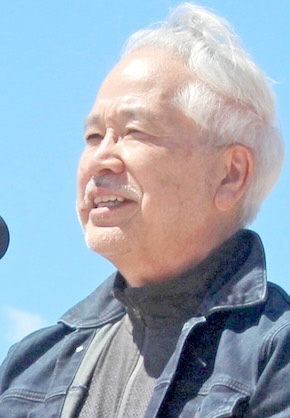
Keynote speaker Don Tamaki
The keynote speaker for the pilgrimage was Don Tamaki, a well-known and respected attorney who somewhat famously and historically served as co-counsel in the 1980 landmark Supreme Court case that overturned the 1944 Fred Korematsu criminal conviction for refusing to go along with the incarceration orders of Japanese Americans during WWII.
The overturned case would serve as an important “boost” that led to the eventual success of Japanese American reparations in 1988 for former camp incarcerees. Tamaki also serves on the California Reparations Task Force for Black American redress, and during his speech, he noted the historical and contemporary nexus between reparations for Japanese Americans in the past and Black American communities today.
“Pilgrimages are powerful because they shine a light — truth,” said Tamaki. “Today, few things are more contentious than the teaching of truth. At least 37 states have adopted new measures that limit how America’s history of racism, from slavery to Jim Crow, can be discussed in public schools. Since 2021, states have introduced 137 bills limiting what teachers can teach about race, history, politics, sexual orientation and gender identity.” He went on to note, “The fact is, when it comes to race, America has been truth-challenged since its inception.”
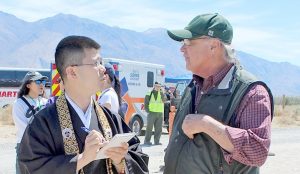
P.C. Contributor Charles James gathers information from a young Buddhist priest.
Tamaki then proceeded to give a history lesson on how Japanese American reparations came about with the support of the Congressional Black Caucus and that it is important to support reparations for Black Americans for slavery in California. “We can learn from the leaders of this pilgrimage, who know that reparations is a justice issue, about holding the nation to its professed ideals.” (A YouTube video of Tamaki’s complete remarks has been posted by the Manzanar Committee under the title “2024 Manzanar Pilgrimage (55th Annual — Don Tamaki Keynote.”)
Omar Altamimi, senior policy and advocacy coordinator of CAIR CA, shared that Islamophobia is at an all-time high with a plague of record-breaking reports of threats and acts of violence, citing several examples. He went on to state that “Silence is complicity. Silence empowers abusers and wrongdoers. Today, we are called upon to break that silence as we witness a genocide that has taken the lives of 34,000 people, 14,000 children.” Altamimi called for peace in Gaza.
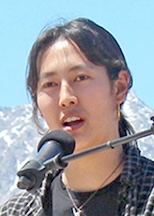
Student speaker Maiya Kuida-Osumi was a recent participant in Katari: Keeping Japanese American Stories Alive, the Manzanar Committee’s joint educational project with the NPS.
Student speaker Maiya Kuida-Osumi spoke briefly about her experience participating in Katari: Keeping Japanese American Stories Alive, which is a joint educational project between the Manzanar Committee and the National Park Service.
Embrey next presented Ron Wakabayashi with the Sue Kunitomi Embrey Legacy Award, saying, “We are honored to recognize Ron for all his outstanding contributions to our community and defending the civil rights of all Americans thanks to his leadership advancing justice for the Japanese American community and defending human rights for all.”
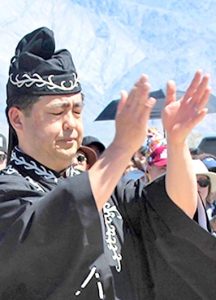
A traditional interfaith service was held at the “Soul Consoling Tower.”
Wakabayashi was one of the pioneers who participated in the first organized Manzanar Pilgrimage in 1969, and through the years, he has served in an astounding number of key positions during his lifetime. He was the national youth director for the Japanese American Citizens League in the late 1960s, a founder and director of the Asian American Drug Abuse Program, the JACL national director during the redress campaign and the executive director of the Los Angeles City Human Relations Commission and the director of the Los Angeles County Commission on Human Relations.
At the closing of the day’s program, the traditional interfaith service was conducted at the “Soul Consoling Tower,” the large concrete obelisk in the camp cemetery built in August 1943 to memorialize those who died at Manzanar.
Concluded Embrey, “We return to Manzanar because we believe it is our duty to honor our families and to say that what happened here must never be forgotten and must never happen to anyone anywhere.”
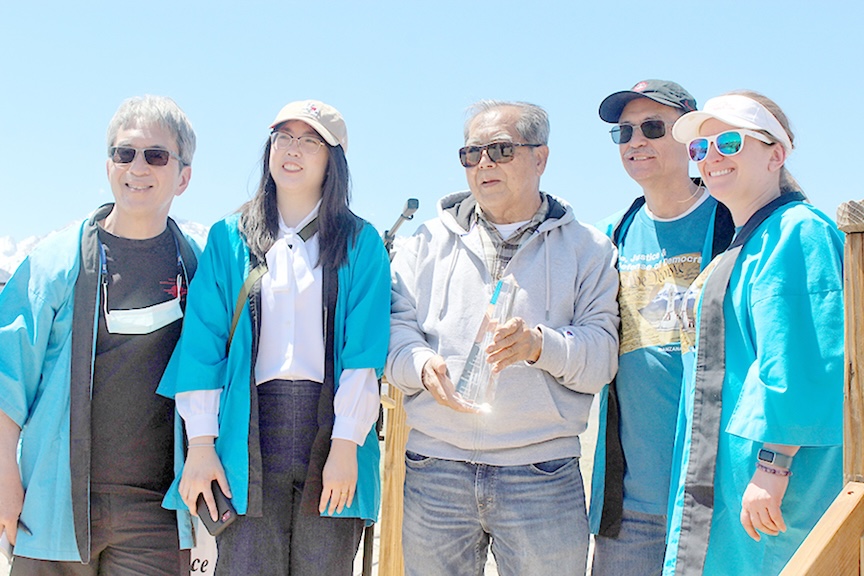
Sue Kunitomi Embrey Legacy Award recipient Ron Wakabayashi (center) with members of the Manzanar Committee




